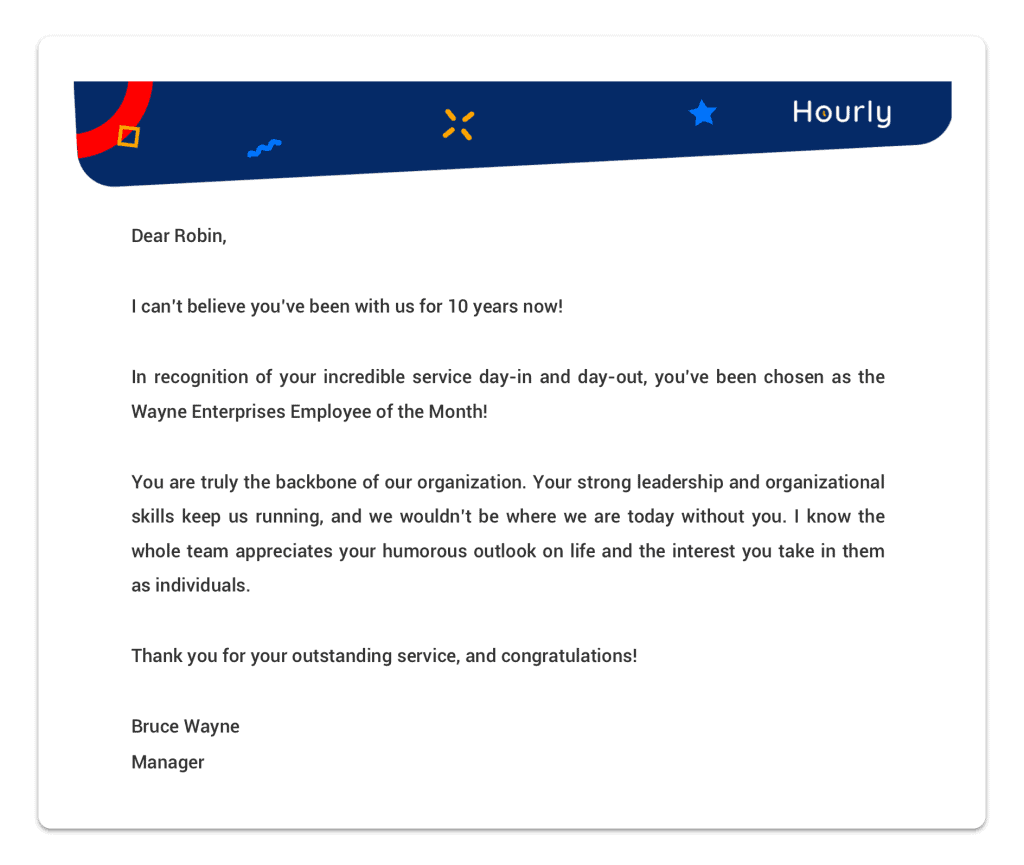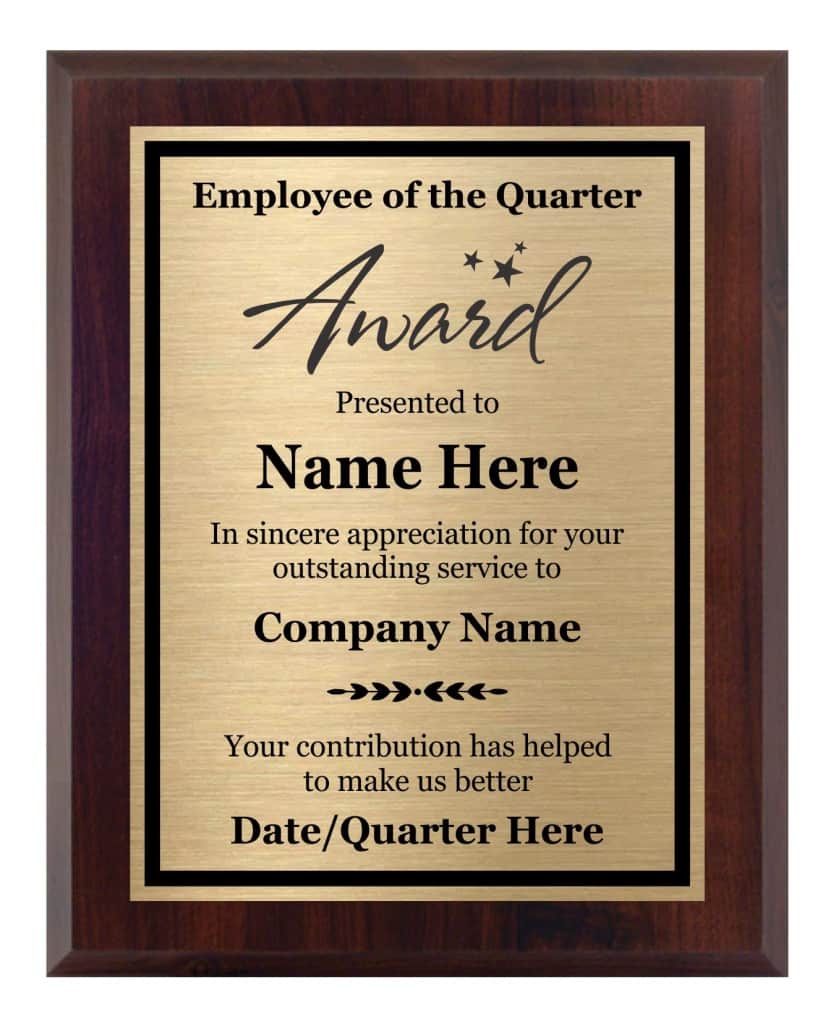How many times do we pause from our busy working lives to acknowledge the special efforts and contributions of those around us? In the hustle and bustle of the modern workplace, the importance of employee recognition often serves as a beacon, guiding organizations toward a culture of mutual appreciation and respect.
Throughout this post, we'll delve into the various aspects of employee recognition, exploring different types of recognition, providing employee recognition examples, and suggesting creative ideas for acknowledgment that have successfully implemented employee recognition programs.
Table of Contents:
- What is Employee Recognition?
- 6 Popular Types of Employee Recognition
- 7 Best Employee Recognition Examples for 2025
- Key Takeaways
- FAQs
What is Employee Recognition?
Recognizing employees is crucial for creating a positive and motivating workplace. It involves acknowledging and appreciating their hard work and contributions. This recognition can take various forms, from a simple thank-you to more tangible rewards, and it plays a big role in boosting morale and improving the overall work culture.
Employee recognition is not just about acknowledging; it's a powerful tool for building connections and retaining staff. When employees feel valued and appreciated, they become more motivated, satisfied with their roles, and committed to the success of the organization.

6 Popular Types of Employee Recognition
Here are six types of employee recognition that organizations commonly implement. By incorporating a mix of these recognition types, organizations can create a well-rounded strategy that caters to different preferences and contributes to a positive and motivating workplace culture.
Verbal Acknowledgment
Simple yet impactful, verbal recognition involves expressing appreciation through spoken words. Whether in team meetings, one-on-one conversations, or during public forums, verbal acknowledgment reinforces the value of an employee's contributions.
Written Recognition
Employers also provide praise through written communication, such as emails, handwritten notes, or formal letters. This tangible form of acknowledgment allows employees to revisit and cherish the recognition they've received.
Tangible Rewards
Tangible rewards, ranging from gift cards and merchandise to symbolic trophies or plaques, provide employees with physical tokens of appreciation for their dedication and hard work.
Employee of the Month Programs
A structured recognition approach takes place when outstanding employees are acknowledged monthly. This may come with additional perks like a special parking spot, a featured workspace, or a dedicated acknowledgment ceremony.
Peer Recognition
This method is the best and simplest way to foster a culture where employees appreciate and acknowledge their colleagues. Whether through informal shout-outs, team meetings, or dedicated platforms, peer recognition with thank-you notes enhances collaboration and camaraderie.
Longevity Recognition
This recognition is the most honorable one. It aims to celebrate employees' service milestones and anniversaries within the organization, often at least 10 to 20 years of commitment. It often involves service awards, commemorative plaques, or special events to honor an employee's commitment and loyalty.
7 Best Employee Recognition Examples for 2025
As we move into 2024, the importance of recognizing and celebrating the efforts of our workforce has never been more important. Here are 7 employee recognition examples for 2024, offering creative and effective ways for organizations to recognize employee dedication and contributions.
1. Thank You
Thank you is one of the most common employee recognition examples, where peers show how grateful they are for what their coworkers have done. These initiatives are often facilitated through well-written notes or digital space where team members can easily express appreciation and publicly commend outstanding work or collaboration. By incorporating recognition from peer to peer publicly, organizations can promote inclusivity, strengthen team dynamics, and create a positive feedback loop that boosts individual morale and engagement.
2. Emails of Recognition
Leadership achievement emails are formal messages from company leaders praising and celebrating the successes of individuals or teams. These emails highlight specific accomplishments, aiming to acknowledge, appreciate, and share these achievements with the entire organization.
The employee recognition write-up examples are used to boost morale, motivate employees, and foster a positive culture of recognition. These messages contribute to building a sense of pride and accomplishment among the workforce while aligning individual efforts with the overall goals of the company.

3. Monthly Accomplishments Bulletin
A Monthly Accomplishments Bulletin is a regular publication summarizing and highlighting the notable achievements, milestones, and successes within an organization for a given month. This bulletin typically includes updates on individual and team accomplishments, project milestones, and any noteworthy contributions by employees.
In addition, it serves as a comprehensive snapshot of the positive developments within the company, keeping the entire workforce informed and engaged. It is an effective communication tool to recognize and celebrate successes, promote transparency, and reinforce a culture of achievement and collaboration among employees.
4. Employee of the Quarter Recognition
This is a part of employee recognition award examples that celebrate an outstanding employee's exceptional contributions and performance over a specific quarter. The recipient is acknowledged for their dedication and positive impact on the organization. This recognition not only honors individual excellence but also inspires the entire workforce, fostering a culture of recognition and excellence within the company.

5. Flexible Work Schedules
Positive recognition examples can be a flexible work arrangement at a specific time. The schedules let employees have more control over when and where they work. This can include choosing start and end times, having compressed workweeks, or the option to work remotely. The idea is to help employees balance work and personal life, making the workplace more adaptable and supportive of individual needs and preferences.
6. Digital Wall of Fame
The Digital Wall of Fame is also one of the most popular employee recognition examples in today's business. It not only enhances a culture of recognition but also promotes positivity, boosts morale, and creates a profound sense of appreciation throughout the workforce. It is the best way to highlight all the exciting achievements and everyone can access the content at any time.

7. Extra PTO day
The last one on the list of top employee recognition examples for 2025 is giving an extra paid day off for your employees, which is also called PTO. This form of recognition is among the top employee incentive programs that employees wish to get for their efforts and high performance. It is said that vacation time is the best medicine for employees to heal burnout, the best time to relax, recharge, and come back motivated, which leads to reduced turnover rates.
Key Takeaways
The various employee recognition examples discussed serve as a guide for organizations seeking to establish a positive, motivating, and employee-centric work environment in 2024 and beyond. From the simplicity of verbal and written recognition to the tangible impact of the employee of the month programs, all are worth doing to show how the companies appreciate employee's contributions.
💡 How to appreciate your employees in a more unique and meaningful way, especially when it is a remote team? Check out AhaSlides right away to host engaging and fun virtual employee recognition events that make your employees thrilled and motivated.
FAQs
What are employee recognition examples?
One way to recognize an employee is by giving them credit in a team setting. For instance, "Let's acknowledge [employee's name] for their outstanding efforts on the recent project. Their commitment and hard work made a positive impact on the entire team."
How do you write a good employee recognition?
If you want to write an outstanding employee recognition, follow these tips:
- Craft great employee recognition involves specificity, positivity, and personalization.
- Clearly state the achievement, use uplifting language, and address the employee by name.
- Connect the recognition to company values, express gratitude for their work, and highlight the positive impact.
- Encourage peer recognition, acknowledge timely, and choose an appropriate communication method.
- Maintain authenticity for a meaningful contribution to a positive work culture.
What do you say about employee recognition?
Employee recognition is crucial for a positive workplace. It involves acknowledging and appreciating individual efforts and contributions, boosting morale and motivation. This practice reinforces desired behaviors, fosters collaboration, and aligns employees with the company's goals. Regular and sincere recognition enhances engagement, job satisfaction, and overall team effectiveness.
Ref: Netsuite








